|
WWII ddx ( Voightlander & Sohnne code) Dienstglas 6x30 German Military Binoculars/ bakelite case |






|
My ddx (Voightlander & Sohnne AG Braunschweig WWII code) Dienstglas military binoculars are post 1940 standard WWII 6x30 German infantry binoculars, and came in a bakelite (early powdered cast plastic) case with “ MD ” manufacturers mark. The “ KF ” (K ätelfest) marking indicates the use of cold weather Invarol lubricant. The German Russian campaign of 1941 particularly brought intense focus onto lubricants for guns, vehicles, aircraft, binoculars, and everything else to enable extreme cold weather operation. (pardon the pun). |

|
Bakelite case maker mark |
|
NON MINIATURE BINOCULARS AND OPTICS: MOSTLY MILITARY |

|
Japanese External Reverse Porro Prism Binoculars. WEBSITE MUSEUM |
|
OTHER BINOCULARS #17 & OPTICAL SIGHTS/ MOSTLY MILITARY |
|
OdelftFranke/ Franke & Co. Optik GmbH Fero 52 ZUB passive night vision binoculars/ monocular, US Govt. property marked, serial # 029 |
|
The Fero 52 ZUB passive night vision device was a product of Frank and Co.Optik GmbH, affiliated with Delft Electronische Producten, with both being subsidiaries of Old Delft Optical corporation of the Netherlands, and which developed light intensifiers in the 1970’s. (On line sellers half the time identify this ZUB 52 as Zeiss, but untrue, and nothing to do with Zeiss). The group supplied night vision devices to Iraq around 1981 during the Iraq–Iran war and a court case was brought against the co. for violating the arms embargo by using secret routes and listing the UK and Portugal as being the destinations to bypass the embargo. Starting in 1989 OIdelft Groep, which became Delft Instruments in 1990, supplied these Fero 52 ZUB night vision devices to Iraq through a Belgian subsidiary as part of a 55 million guilders (around $27 million dollars) order. Part of that which was delivered 4 months after the general arms embargo was in effect. This came to light because US soldiers captured Fero 52 ZUB night vision devices in Iraqi positions in 1991 and 1992 during the Iraq War/Second Gulf War . Given the “US Govt.” sticker/ lots of sand & dust on my serial number 029 Fero 52 ZUB I believe these were one of these captured units (speculative), because I know the US Government collected them as evidence of Delft armaments embargo violations, and based on finding these, the US boycotted all Delft divisions (stopping any US part acquisition by the Delft subsidiaries and blocking Delft sales in the US ). Deft had many subsidiaries, including many involved in medical imaging, including ultrasound. |





|
And based on US soldiers finding Fero 52 ZUB night vision devices in Iraq the US pursued a court case against Delft Instruments, eventually winning $3.3 million dollars from the co. in 1992 Info credit: Wikipedia. Some surplus dealers claim the German army used some of these. Given use of German markings it is plausible, but I have no credible confirmation. |

|
“DO NOT REMOVE THE LENS CAP IN DAYLIGHT” |
|
Sand & dust |


|
1939 Carl Zeiss Dienstglas 6x30 German Army binoculars serial No. 1920621 |
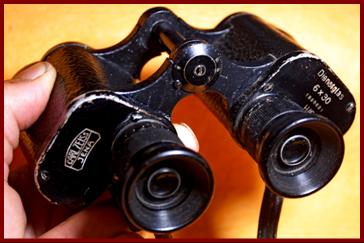



|
My Carl Zeiss Jena 6x30 Dienstglas WWII German military binoculars with graticule/ range grid were made in 1939. |
|
1910 Carl ZeissTelexem 6x21 German binoculars made for US Navy contract, and U.S. Navy property marked, serial no. 146922 property no. R25053 |


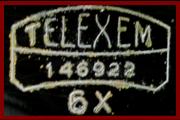

|
My Carl Zeiss Jena Telexem binoculars were probably produced in 1910 based on the Zeiss Telexem 6x21 model being introduced in 1910 and the Telexem model changing to 6x24 in 1911 (info credit binocollection.com). Prior to US entry into WWI U.S. Navy procurement did contract for various civilian model (center focus) binoculars, probably because of quick availability off active production lines, and perhaps because the higher likelihood of center focus impact damage might have been less of an issue than for army field issue. Also extremely unlikely issued as primary ship’s binoculars. |
|
ABDULWAHED branded 7x50 Saudi Arabian contracted Japanese Kokisha Ltd. Military Binoculars with graticule captured from an Iraqi tank group commander in 2003 U.S. invasion. |


|
Ahmed Abdulwahed Abdullah Anam & Partners Co. are a Saudi Arabian retail chain under the Abdul Wahed brand and an importer, selling optics and electronics since the 1960’s, including contract made binoculars sold under their brand name. My Abdul Wahed 7x50 binoculars have a military graticule/ range grid, and carry JB code 21 indicating they were assembled by Kokisha Co. Ltd. of Japan, and given when JB codes largely ceased being used these were probably made in the 1970’s. Since virtually no civilian binoculars have an artillery graticule, ranging grid, these were produced as military binoculars. They were captured from an Iraqi tank group commander during the 2003 U.S. invasion of Iraq by a US soldier. |

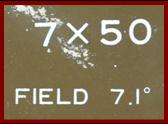


|
The Arabic script says ABDULWAHED. |
|
WWII US Army Telescope sight mounted inside M4 periscopes for indirect sighting of 75mm artillery on M4 Sherman and Chafee light tanks |




|
1943 US Army Field Manual Volume 17 issue 2 Tank Gunnery |
|
My telescope M38A2 is reticle scope fitted inside the M4 periscope fitted to Sherman and Chafee tanks using 75mm main guns in WWII for indirect sighting and fire control. |
|
WWII Japanese Nikko (Nippon Kogaku)10x45 trench and bunker periscope binoculars serial # 3087 |



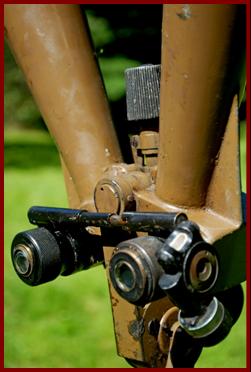
|
The military use of periscopes to look over objects is documented since 1647 (Johame Hevelius). They were widely used in WWI trenches not to exposing the user’s head to rifle fire or shrapnel. The two bubble levels, multiple fine adjustment knobs, and angle scales indicate that my Nikko (Nippon Kogaku) Japanese army trench binoculars were for artillery targeting and directing. |




|
WWII Japanese Nikko (Nippon Kogaku)15x artillery binoculars serial # 1840 |






|
CAN A VIEW ER HELP WITH KANJI MARKING TRANSLATION OF YELLOW TAG? COMTACT: miniaturebinoculars@gmail.com |
|
My large WWII Nikko (Nippon Kogaku) artillery binoculars with graticule would have been for artillery targeting, spotting, observation and similar applications employed on either a fixed mounting or tripod mount. (the brass mount currently on it is a later adaptor) |

|
WWII era Japanese Nikko (Nippon Kogaku) 4x20mm military monocular component serial # 998 |

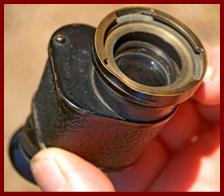

|
While my WWII Nikko (Nippon Kogaku) 4x20 monocular is optically complete (sharp focus) the fact of having a rotational engagement to another part and being marked with the kanji indicating “right” indicates it was part of a binoculars mechanism of some sort, probably military. The low serial number of 998 suggests low production. My internet searches for “Nikko 4x20” have turned up no relevant results. If anybody can help with knowledge of these contact : miniature.binoculars@gmail.com |

|
NIKKO Artillery 3x13 ° Optical Sight for 1932 Japanese Type 92 72mm Battalion Howitzer ( 九二式歩兵砲 , Kyūni-shiki Hoheihō ) |




|
My Japanese artillery sight is from a type 92 light howitzer known as Kyūni-shiki Hoheihō/ 九二式歩兵砲 , which was introduced in 1932 (year 2592 imperial calendar). These were used in the Manchuria incident and invasion of Manchuria, in the second Sino Japanese war, and were used in WWII, and were even used as late as the 1960’s in the Vietnam War. For the Japanese army this was the standard battalion artillery ( 大隊砲 , Daitaihō ). My optical sight is marked NIKKO, which is the brand name used by Nippon K ō gaku K ō gy ō Kabushikigaisha (which later became Nikon) from around 1921-1945. Nippon K ō kaku military binoculars and optical devices of WWII are usually marked NIKKO. |

|
1925 Carl Zeiss Deltrentis 8x30 L.M.S./ London.Midland.Scottish railway contract property marked binoculars serial #1272200 |



|
The London Midland and Scottish railway (L.M.S.) was formed in 1923 under the Raiway act of 1921 which merged 120 separate railways into four. The L.M.S. was formed by the London and North Western Railway, Midland Railway, Lancashire and Yorkshire Railway, and a number of Scottish and smaller railways, and L.M.S. became the world’s largest transport organization, the largest commercial enterprise in the British Empire, and the UK’s second largest employer after the post office (info credit Wikipedia). |





|
1938 Russian PG-1 Optical Sight for ZIS-3 76mm anti tank gun made by the Novosibirsk factory, then captured and reused by the Finnish Army: SA / Suomi Armeija/ Finnish Army property marked |
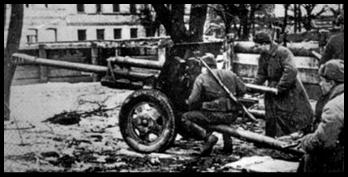
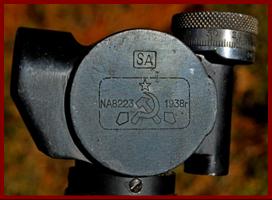



|
My 1938 Russian PG-1 panoramic telescope sight for the ZIS-3 anti tank gun was made in the Russian Novosibirsk Instrument making plant ( Новосибирский приборостроительный завод ), and was than captured and reused by the Finnish army SA / Suomi Armeija. |

|
(cannon) |
|
WWI Austro Hungarian Army Carl Zeiss Wein (Austrian Factory) 15x60 M.8/12 Doppelfernrohr Military anti-aircraft Binoculars serial number #719691 |
|
My understanding is that during WWI the Hungarian Zeiss Karoly factory assembled model 1908/1912 Carl Zeiss Dopplelfernfohr (double telescope) binoculars, and the Austrian Zeiss Wein factory assembled 250 of this model 1915-1918 for the K.u.K. (Kaiserlich und K ö nigliche) army. My Carl Zeiss Wein example has an integral mount that limits the angle adjustment to an aircraft spotting angle, so these were specifically designed only for that purpose. |






|
Austro Hungarian soldiers using this pattern 15x60 binoculars , but with a different ground mount. |
|
M 8/12 Z (model 1908/1912 Zeiss) 15 fach mit Skala (15 power with scale/grid/strichplatte) Doppelfernrohr (double telescope) Nr. 719691 (serial No. 719691. |
|
1944 U.S. Army telescope Panoramic E.K. Co. / Eastman Kodak M12 A3 Artillery Scope for the U.S. 105mm howitzer |




|
The U.S. 105 mm howitzer artillery gun was standard WWII U.S. Army artillery, and one of every five shells that the U.S. fired was from the 10,000 105 mm M2A1 howitzers made (renamed 101 in 1960), and eventually used by 75 countries. My 1944 telescope panoramic M12 A3 was typically used for laying weapon in azimuth for indirect fire, and the E.K. Co. marking is Eastman Kodak Co. of Rochester New York (traditionally associated with the photo industry). The F.J.A. marking is for Frank J. Atwood of the Springfield and is related to inspection/ approval/ quality control. Quality was a concern with manufacturers making non traditional products in WWII. |
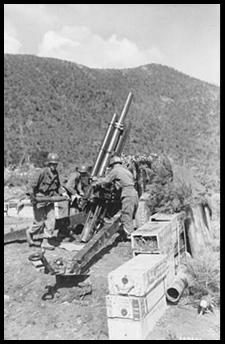
|
WWII Spencer Lens Co 7x50 U.S. Navy Bureau of Ordnance Mk 13 Mod 5 binoculars |
|
The Spencer Lens co. of Buffalo NY. USA was founded in1895, but because of the U.S. great financial depression (1921-1941) was bought by American optical in 1935, and operated as a subsidiary until renamed in 1945. During WWII Spencer Lens produced microscopes, telescopes, gun sights, periscopes, fire control optics, and binoculars like my U.S. Navy Bureau of Ordnance Mk13 Mod 5 example for the US military with Spencer marked case. Spencer binoculars were supposedly considered by the U.S. Navy as more waterproof, and were issued to sub crews, underwater demolition crews, and later space capsule recovery crews. The company still exists as Ametek Reichert Technologies. |
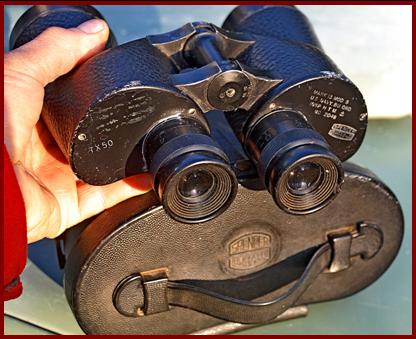

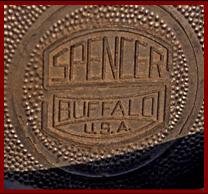

|
WWII Japanese Nikko (Nippon Kogaku) 4x military monocular with case serial # 10330 |

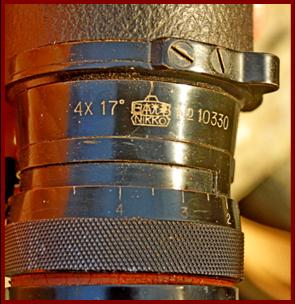


|
My WWII hand held 4x 17 ° Nikko (Nippon Kogaku) monocular with carry case and filters serial #10330 with 70 vertical x150 horizontal reticule/ range grid seems to be an uncommon unit (speculative but based on years of searching for WWII era e Nikko optics). Unlike the spotting scopes they have no provision for any fixed or tripod mount. |

|
U.S. officers on Okinawa with captured Japanese binoculars. |
|
MONTHLY NEWLY ADDED ITEMS ARE INSERTED THROUGHOUT THE SECTION AND NOT NECESSARILY ON THE LAST PAGE. Redirected search such as google image may display old content or distortion: try a refresh and or go directly to the site : http//www.miniaturebinoculars.com |
|
MONTHLY NEWLY ADDED ITEMS ARE INSERTED THROUGHOUT THE SECTION AND NOT NECESSARILY ON THE LAST PAGE. Redirected search such as google image may display old content or distortion: try a refresh and or go directly to the site : www.miniaturebinoculars.com |





![Text Box: CLICK ON PAGE LINE. CLIQUEZ SUR LA LIGNE DE PAGE. KLICKEN SIE AUF SEITENZEILE. HAGA CLIC EN LÍNEA DE PÁGINA..[ページ行]をクリックします。НАЖМИТЕ НА СТРОКУ СТРАНИЦЫ. ALSO SEE INDEX.](image3473.gif)